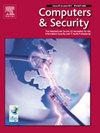基于深度学习的基于NetFlow数据的反射攻击预测
IF 4.8
2区 计算机科学
Q1 COMPUTER SCIENCE, INFORMATION SYSTEMS
引用次数: 0
摘要
大型网络通过部署大量服务器和高速路由器,为部署具有快速响应时间的网络服务提供了巨大的支持。虽然存在几种检测网络攻击的技术,但预测未来的攻击可以帮助增强网络的安全性。反射攻击是大型网络中导致服务中断的最常见原因之一。反射攻击是一种特殊类型的分布式拒绝服务(DDoS)攻击,它隐藏攻击者的身份,利用反射器向网络中散布大量恶意流量。现代网络会产生大量的NetFlow数据,对这些数据的分析是识别反射攻击的基础。通过对某大型企业网络中31亿条NetFlow记录的综合分析,在NetFlow数据中发现了针对DNS和NetBIOS服务器的反射攻击。就目前所知,还没有研究评估时间卷积网络(TCN)、循环神经网络(RNN)和长短期记忆(LSTM)深度学习(DL)模型来预测大型网络中的反射攻击。因此,本文的目的是确定TCN, RNN和LSTM是否可以使用NetFlow数据预测反射攻击。本文提出了一种预测反射攻击的方法,并在实际NetFlow数据上对TCN、RNN和LSTM进行了评估。本研究结果表明:(a) RNN和LSTM预测DNS服务器反射攻击的R2值最高,在不同的日期范围为0.39 ~ 0.992,(b) RNN、LSTM和TCN预测NetBIOS服务器反射攻击的R2值最高,在不同的日期范围为0.749 ~ 0.999,(c) DNS服务器反射攻击产生的数据包百分比在0.001% ~ 18%之间。(d) NetBIOS服务器反射攻击产生的数据包百分比从0.2%到16%不等,(e)与DNS服务器反射攻击相关的源设备和目的设备百分比从0.0006%到0.022%不等,(f)与NetBIOS服务器反射攻击相关的源设备和目的设备百分比从0.071%到34%不等。结果是:(a) RNN、LSTM和TCN在12个日期预测DNS服务器反射攻击的准确度较高,(b) RNN、LSTM和TCN在14个日期预测NetBIOS服务器反射攻击的准确度较高,(c) RNN、LSTM和TCN在2个日期预测DNS服务器反射攻击的准确度较低,(d) DNS和NetBIOS服务器反射攻击产生的流量没有使网络过载,(e)与这些反射攻击相关的源设备和目的设备数量较少。本文章由计算机程序翻译,如有差异,请以英文原文为准。
Deep learning-based prediction of reflection attacks using NetFlow data
Large networks provide tremendous support for the deployment of networked services with fast response times by deploying a large number of servers and high-speed routers. While several techniques exist to detect network attacks, predicting future attacks can help to enhance the security of the network. Reflection attacks are known to be one of the most common causes of service disruption in large networks. A reflection attack is a special type of Distributed Denial-of-Service (DDoS) attack that hides the identity of the attacker and floods the network with a large volume of malicious traffic by using reflectors. Modern networks generate a large volume of NetFlow data, and analyzing this data is an advocated basis for identifying reflection attacks. A comprehensive analysis of 3.1 billion NetFlow records obtained from a large enterprise network is conducted, and reflection attacks on the Domain Name Service (DNS) and NetBIOS servers are identified in the NetFlow data. As far as it is known, there is no work that evaluated Temporal Convolution Network (TCN), Recurrent Neural Network (RNN) and Long Short Term Memory (LSTM) deep learning (DL) models to predict reflection attacks in a large network. Thus, the aim of this paper is to determine if TCN, RNN and LSTM can predict reflection attacks using NetFlow data. This paper proposes an approach to predict reflection attacks and evaluates TCN, RNN and LSTM on real NetFlow data. The results from this study show that: (a) RNN and LSTM predicted DNS server reflection attacks with the highest coefficient-of-determination () value that ranged from 0.39 to 0.992 on different dates, (b) RNN, LSTM and TCN predicted NetBIOS server reflection attacks with the highest value of that ranged from 0.749 to 0.999 on different dates, (c) the percentage of packets generated by DNS server reflection attacks ranged from 0.001% to 18%, (d) the percentage of packets generated by NetBIOS server reflection attacks ranged from 0.2% to 16%, (e) the percentage of source and destination devices associated with DNS server reflection attacks ranged from 0.0006% to 0.022% and (f) the percentage of source and destination devices associated with NetBIOS server reflection attacks ranged from 0.071% to 34%. The outcomes are: (a) RNN and LSTM predicted DNS server reflection attacks with high accuracy on 12 dates, (b) RNN, LSTM and TCN predicted NetBIOS server reflection attacks with high accuracy on 14 dates, (c) RNN, LSTM and TCN predicted DNS server reflection attacks with low accuracy on 2 dates, (d) the traffic generated by DNS and NetBIOS servers reflection attacks did not overwhelm the network, and (e) a small number of source and destination devices are associated with these reflection attacks.
求助全文
通过发布文献求助,成功后即可免费获取论文全文。
去求助
来源期刊

Computers & Security
工程技术-计算机:信息系统
CiteScore
12.40
自引率
7.10%
发文量
365
审稿时长
10.7 months
期刊介绍:
Computers & Security is the most respected technical journal in the IT security field. With its high-profile editorial board and informative regular features and columns, the journal is essential reading for IT security professionals around the world.
Computers & Security provides you with a unique blend of leading edge research and sound practical management advice. It is aimed at the professional involved with computer security, audit, control and data integrity in all sectors - industry, commerce and academia. Recognized worldwide as THE primary source of reference for applied research and technical expertise it is your first step to fully secure systems.
 求助内容:
求助内容: 应助结果提醒方式:
应助结果提醒方式:


